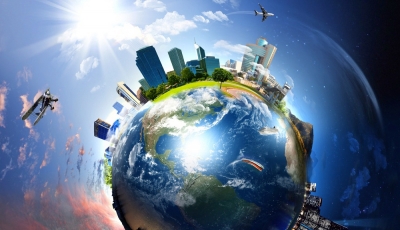
For the first time in history humanity’s footprint is getting heavier than that of the natural world. By the end of this year, the weight of all the human-made materials – from skyscrapers to buttons – will likely exceed that of all the living things on Earth – from all the elephants on land to all fishes in the ocean and from all the trees and plants to microbes that live under the soil. The estimated weight of human-made objects is about one teratonne. At the current growth rate that number could become three teratonnes by 2040.
The calculations are a result of a study done by researchers at the Plant and Environmental Sciences Department of the Weizmann Institute of Science in Israel.
Alarming numbers
The study finds that buildings and roads account for most of the human-made mass, and a number of construction trends – including shifting from bricks to concrete in construction in the mid-1950s – contributed to the accelerated weight accumulation. The weight of constructed materials is doubling roughly every 20 years. On the other hand, weight of the biomass (of plants, trees and animals) has halved since the agricultural revolution. It stands at just approximately one teratonne currently – almost equal to anthropogenic mass. This is mainly because of deforestation and land use changers.
By taking data from previous industrial and ecological studies into account, the researchers estimated the changes in global biomass and human-made mass since 1990 and found that the mass of human-produced objects stood at just three % of the weight of biomass at the start of the 20th Century. But today, it’s accumulating at a rate of 30 billion tonnes a year. This means, for every person in the world, more than their body weight in stuff is being produced each week.
The age of humans
The study notes that there may have been twice as much plant biomass on Earth about 12,000 years ago, before people started clearing vast swaths of forest for land cultivation.
The finding may bolster the argument that Earth has entered the Anthropocene, a proposed geologic epoch in which humans are the dominant force shaping the planet.
What’s Anthropocene?
The Holocene is the current geological epoch, which began 11,700 years ago – after the last major glacial epoch. (An epoch is a subdivision of the geologic timescale that is longer than an age but shorter than a period. The Holocene Epoch is part of the Quaternary Period.)But it might be cut short by a new epoch – the Anthropocene or the Age of Humans – if recommendations of the Anthropocene Working Group (AWG) are to be accepted. (Anthropocene – from anthropo, for ‘man,’ and cene, for ‘new’).
Last year, members of AWG voted in favour of recognising a new epoch to mark the profound ways in which humans have altered the planet. The panel plans to submit a formal proposal for the new epoch by 2021 to the International Commission on Stratigraphy, which oversees the official geologic time chart.
Proponents of the Anthropocene theory have put forth many ideas about when the Anthropocene began. Some think it kicked off thousands of years ago when humans started agriculture, while others say it started around 1800 when human population hit one billion and carbon dioxide started to significantly rise due to the burning of fossil fuels in the industrial Revolution. The AWG voted in favour of starting the new epoch in the mid-20th Century, when the first atomic bomb blasts (1945) contaminated the globe with radioactive debris that became embedded in sediments and glacial ice, becoming part of the geologic record. The final ratification will be made by the executive committee of the International Union of Geological Sciences.
Picture Credit : Google



